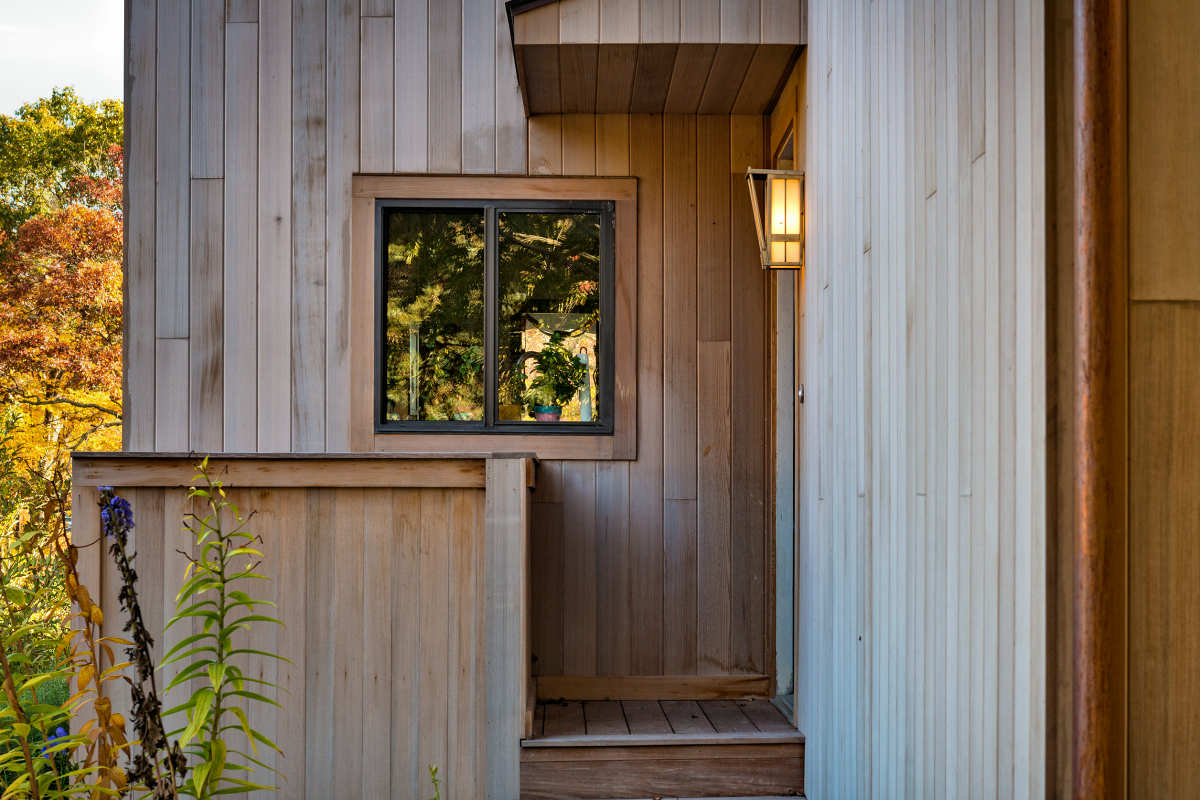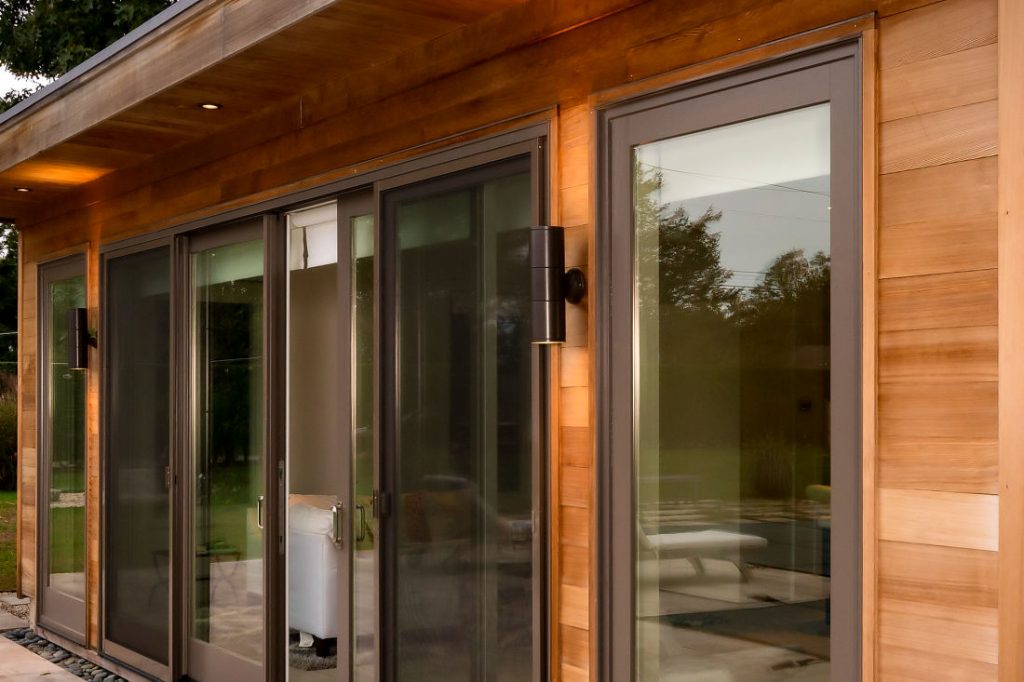Published on: November 25, 2023

Before you install cedar tongue and groove siding, make sure you know all there is to know about having real wood siding. Cedar is certainly beautiful and timeless, which is why many building owners consider it when replacing siding. But there are many considerations to take into account despite the ease of installing this siding now with tongue and groove designs.
First, learn about the disadvantages you can face when installing cedar siding.
Cedar siding made from real wood requires regular maintenance. You can face chipping, flaking and peeling surfaces as well as the boards warping due to being out in the elements constantly. Because of that, you’ll need to plan to scrape and paint or stain the siding every two to three years.
This also means you need to budget for the expense of regularly refinishing this siding material. That could mean hundreds of dollars in materials to do the work yourself or thousands of dollars to pay a professional to do it for you.
Preparing cedar siding requires harvesting trees for the lumber. Forests are shrinking at stark rates even with siding companies being committed to reforesting initiatives. Sourcing cedar is an environmental concern despite being a renewable natural resource. It just takes so long for these trees to reach maturity again, which likely means the building owner will be looking at residing around that time.
Cedar is a fragile siding material, even more so than pine or other common woods used in siding. It requires flawless installation, which experts will know how to do. You’ll just want to pick your installer very carefully when getting this siding type. Additionally, if you don’t do the regular maintenance, the wood can dry out and rot faster. You can’t put it off and just think you’ll do it next year when life is slower.
Even with perfect maintenance, cedar siding has a short lifespan of 20-30 years. When you compare the price you’ll pay for materials and installation to vinyl or fiber cement, you’ll see that it’s far more financially beneficial to install other materials.
You might even find yourself replacing some boards after just 10-15 years, adding to the total cost of ownership. And when you have to replace a board, it will be challenging to make it match perfectly with the other boards that have been in the elements for many years. That might mean repainting or staining the siding even sooner than expected.

When it comes to cedar siding, you generally can only choose between shake and horizontal lap siding. While you can accomplish many other appearances with other materials, cedar is hard to find in those styles.
The tongue and groove style is limited to just horizontal siding. So if you want a unique design, you’ll need to go with another material or talk with your installation team about what they are equipped to install and how it will look with the style of your home.
So with those disadvantages, why do building owners still opt for cedar siding? There are many excellent reasons to still go with this material if you’re ready to take on the maintenance requirements.
There’s no denying that real cedar wood has characteristics you can’t manufacture or replicate. Its natural color is classic and beautiful and can really make a statement for your home. When paired well with accent colors and trim, it can really make your home distinctive.
The wood is lightweight and a good insulator for buildings. It helps trap air that is inside to keep it from exiting the home. In contrast, many other siding materials allow treated air outside of a home without proper materials.
You’ll also find that cedar siding does a good job of canceling outside noises to keep your home or building comfortable. That way, you won’t hear every car that drives by or conversations neighbors have on the sidewalk out front of your home.
Because cedar siding comes with tongue and groove, some building owners believe they can install these materials themselves. However, that is not advisable. Installing this siding requires a deep understanding of how the wood will adapt to being installed and how to accommodate for the expansion of the wood.
Some reasons you should leave cedar siding installation to professionals include the following.
Before installing cedar siding, it needs time to acclimate to its new surroundings and weather conditions because it is a natural material that will change and adapt to the area where you place it.
Cedar siding will swell or shrink based on the amount of moisture in the air. But just because you’ll be exposing these boards to the elements once installed, you don’t want them in direct sunlight or being subjected to precipitation or dirt. So keep it well protected on a flat surface. Just be sure you don’t seal the wood because it needs air circulation to acclimate.
Even with tongue and groove siding, you’ll need to use the right fasteners and techniques to ensure proper installation. For most use cases, stainless steel fasteners are considered safe and effective because they are corrosion-resistant. Aluminum is another option that is good for cedar. You just want to avoid unapproved materials because they can deteriorate and leave your siding sagging or leave streaks and stains on your siding.
Hot-dipped galvanized can be good for pre-primed wood that will then receive a coat of stain or paint after installation.
Without proper flashings, you could end up with moisture in your walls and roof. That’s because flashing is designed to move water away from the building to help the siding do its job.
You don’t want your siding to extend to the water table where it could absorb water. Additionally, if your siding extends down to a roof, you need a two-inch gap so it won’t wick the water from the roof. Improper installation could lead to faster siding deterioration or even moisture in your walls and foundation that causes larger issues.
If you want the appearance of siding without maintenance, fiber cement or vinyl are great alternatives. You likely don’t think of vinyl siding when picturing a home that appears as though it has wood siding. However, vinyl siding styles have advanced so much that it can look like shake or shingle siding as well as lap siding. While you’ll be able to tell up close that it is vinyl and not real wood, it will look great from the curb and offer the lowest maintenance option.
Fiber cement siding is challenging to differentiate from wood unless you’re a professional. It will look just like wood but have a much less stringent maintenance schedule and is paintable to match your style or appearance preferences as trends adapt and change.
Whether you want cedar tongue and groove siding or you’re wondering what your options are for accomplishing that appearance without the maintenance, you want to ensure you’ve selected a skilled professional siding installation contractor.
2FL Windows, Siding and Roofing offers high-quality workmanship using leading materials from industry-leading manufacturers. Schedule your free in-home estimate now.
Further Reading:
Comments are closed.

Read the latest articles about siding.

[…] Considerations for Cedar Tongue and Groove Siding […]
[…] Considerations for Cedar Tongue and Groove Siding […]
[…] Considerations for Cedar Tongue and Groove Siding […]